Tuesday, February 1, 2011
random sustainability seafood thought
Sustainable fish is such a complicated issue. One major component of this issue is that many fish are essentially carnivores and in order raise them in "farmed" setting, they must be fed large quantities of other fish for protein and oil, and this is bad because we end up "eating" the equivalent of a few pounds of fish for every. Vegetarian feed alternatives can work, but often don't taste quite right and they often don't grow quickly enough.
I wonder if anyone has really looked into growing massive quantities of earthworms in all the massive manure waste from industrial feedlots and using the earthworms as feed. Two problems solved at once?
Monday, August 17, 2009
Processed Food Bad
What to do from a policy standpoint about processed food. Let's review what we mean by processed food, i.e. why is it different than traditional methods of making food.
Monday, June 8, 2009
Snap, son! Baseballer Ryan Howard gets White House garden tour | Grist
seriously, we have baseball players at the whitehouse talking about organic food and how awesome it is!? crazy times
Wednesday, April 29, 2009
Arugula - wild seeding edition
No, I'm not going to stop talking about arugula. so just deal with it.

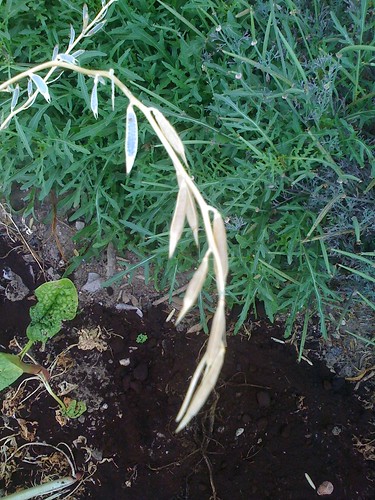
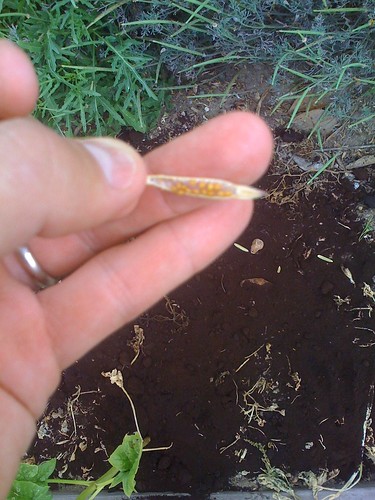



potatoes again, maybe
So my last attempt at potatoes failed (pretty badly it turns out) due to some pest, I think pill bugs, so I think that I am inspired by this to try again. It involves building things, so that's good. It is a great example of intensive gardening, so that's good. I will employ some methods to keep pill bugs at bay, organically of course, so that's good too.


Thursday, April 23, 2009
White House Garden Quiz
I am obviously a little obsessed with the garden. But not obsessed enough!! i only got an 86% on an online quiz about it!!!!

See well how you can do.

See well how you can do.
Rhubarb
So yet another vegetable that I wouldn't know much about without home gardens. I vaguely remember my mom growing some and then a friend made some great rhubarb cobbler when I was in graduate school in Georgia. Then some other vague times to have some here and there, but now it is time for me to have some of my own. I planted some seeds in a cup on the window sill. ~6 weeks later, here we are:
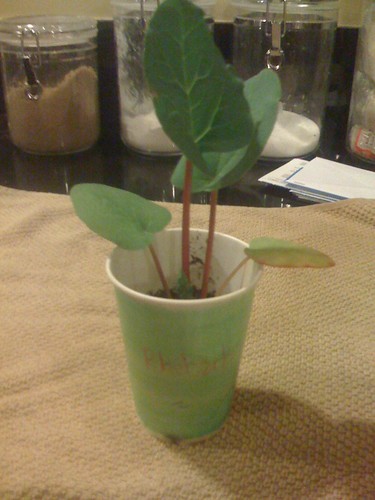
You know what probably goes great with Rhubarb in a cobbler? Blackberries (just blossoms for now).

You know what probably goes great with Rhubarb in a cobbler? Blackberries (just blossoms for now).
Wednesday, April 22, 2009
5 minutes 13 seconds
That's how long it took me to plant a new bed of lettuce greens. Let me show you, because, we all are pressed for time. Especially those of us with 3 kids.
I did this after putting the baby to sleep, before I put the big kids down. They were brushing their teeth.
1. walk to garage to get a handful of bonemeal.
2. walk to veggie bed and level a 2'x2' patch of soil that had been previously cleared. take picture.
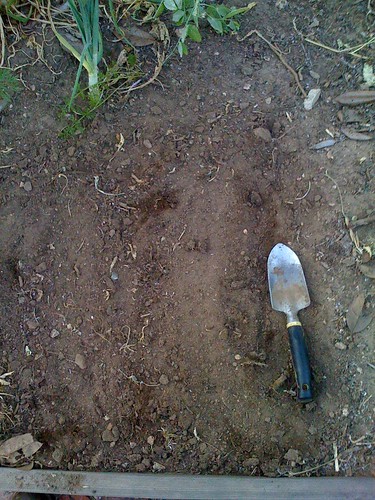
3. dump a pile of coffee grounds from Starbucks and throw bonemeal on top. take picture.
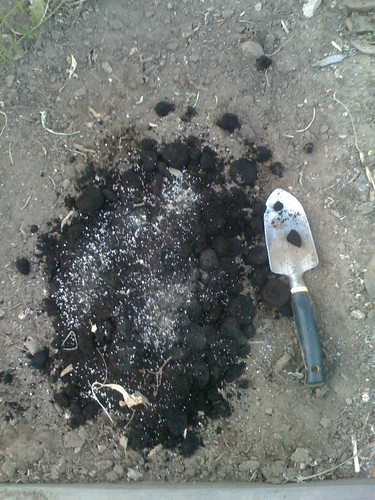
4. spread these over patch and slightly, barely mix in with soil. take picture.
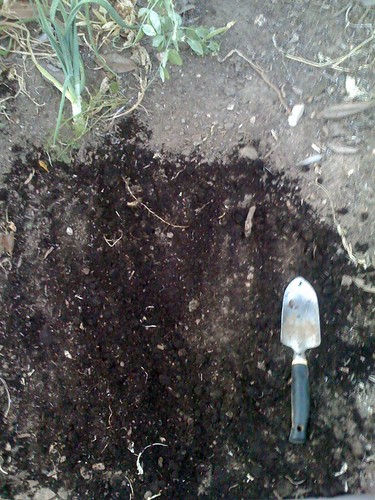
5. scatter mesclun mix seeds evenly on patch. take picture.

6. lightly cover with loose soil. take picture.

7. done.
Lettuce is easy. Plant lots of it. Don't forget arugula. This was actually supposed to be arugula, but at the last minute, I couldn't find my seeds, and I only had 5 minutes and 13 seconds!
I did this after putting the baby to sleep, before I put the big kids down. They were brushing their teeth.
1. walk to garage to get a handful of bonemeal.
2. walk to veggie bed and level a 2'x2' patch of soil that had been previously cleared. take picture.

3. dump a pile of coffee grounds from Starbucks and throw bonemeal on top. take picture.

4. spread these over patch and slightly, barely mix in with soil. take picture.

5. scatter mesclun mix seeds evenly on patch. take picture.

6. lightly cover with loose soil. take picture.

7. done.
Lettuce is easy. Plant lots of it. Don't forget arugula. This was actually supposed to be arugula, but at the last minute, I couldn't find my seeds, and I only had 5 minutes and 13 seconds!
Monday, April 20, 2009
Ask FYV - Preparing the Soil
"Take care of your soil, and your soil will take care of you"
-some smart guy
For maximum growth of your vegetables, you must have loose, nutrient-rich soil. Here is why:

Look at that picture and you see the roots of a carrot going down up to 7 feet down. As I will show below, that only happens when your soil is well cared for.
I am clearly no Michael Pollan, but let me attempt to boil down my rules for soil into their bare essentials.
loosen soil. add organic material. cover well. stay off.
That really is it, but I will explain a bit. Let me also note, that if the thought of doing anything to your soil is overwhelming for your first time growing anything, then don't. I give you permission to make holes in the ground and put the seeds/plants in them and do nothing else.
soil structure - if you look at this picture, you can see the difference between loosened soil and compacted soil on the root structure.

Today I will cover just one aspect:
loosen soil
I do the following ONCE (as in ever) when I prepare a vegetable bed. I mark out the area that I will be planting in, and start digging down ~1-2 feet and move all that dirt to the side. Then I use a pitchfork and seriously loosen the soil a further 2 feet. I throw in as much organic material as I can, then replace the top layer of soil and mix. I then cover it with a couple of inches of (non-woody) mulch
That is a good bit of work and you don't have to do it. In between nothing and what I do, you can simply cover the ground with lots of good compost, coffee grounds, mulch whatever. Add some organic fertilizers and you are set. if there is organic material there, then earthworms will do the rest over time. If you really want to understand this approach then I recommend "lasagna gardening" The entire book is summarized in the first 10 pages or so.
I will delve into more details on what to add to your soil next.
bad day for planting
So I went and bought a few plants for the garden (eggplant, melon, zuchinni, more basil), and THEN I looked at the forcast. (this is the printout from the next day, you still get the idea)
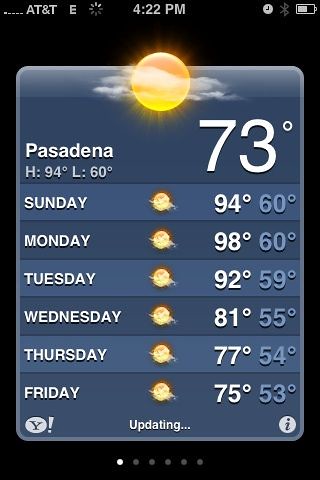
Sunday turned out to be 97, today ~100. I will wait until Wednesday to plant those babies...

Sunday turned out to be 97, today ~100. I will wait until Wednesday to plant those babies...
Subscribe to:
Posts (Atom)

